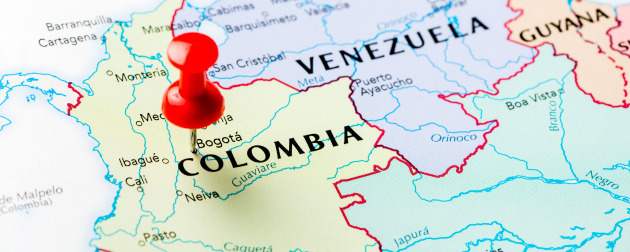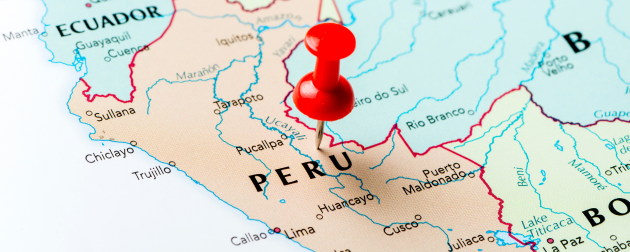Are you an American or Canadian software company considering expanding your operations into Latin America? Understanding the intricacies of labor legislation and regulatory frameworks in each country is essential for a smooth and compliant expansion. This article serves as your go-to resource, offering insights and practical guidance on navigating labor laws, engaging with regulatory agencies, and fostering a productive and legally sound work environment.
Disclaimer: This article provides general information and should not be considered legal advice. It serves as a starting point for your research and understanding of labor legislation in Latin America. We encourage you to consult with legal experts to ensure compliance with local laws and regulations specific to your company’s circumstances.
First of all, if you’re looking to expand operations there, you should know there is homework to be done:
#1 Comparative Analysis of Labor Legislation
By understanding the specificities of each country, you can ensure your employment practices align with local laws and protect both your company and your employees. That said, let’s delve into a comprehensive comparison of labor legislation across Latin American countries, focusing on vital aspects such as engagement models, probation periods, work hours, paid time off conditions, leaves of absence, and termination conditions.
#2 Understanding Regulatory Agencies
To successfully navigate labor legislation, it’s crucial to be familiar with the regulatory agencies responsible for overseeing employment matters in each country. We provide you with an overview of these agencies, their roles, and the resources they offer to support companies in complying with labor laws. Proactively engaging with regulatory agencies can help you stay informed, address any concerns, and maintain a positive relationship with local authorities.
#3 Overcoming Challenges and Best Practices
Expanding into a new region presents unique challenges. We discuss the common obstacles faced by American and Canadian software companies in Latin America and share best practices to overcome them. From contract management to workplace health and safety, we offer actionable strategies to ensure compliance, mitigate risks, and foster a harmonious work environment for your team.
What does Labor Legislation and Worker’s Rights Look Like for Latin American Countries?
Things vary by and within each territory, but general rules are:
- Engagement Models: Most Latin American countries have full-time employment models, and some also recognize part-time and fixed-term contracts. Independent contractor arrangements may vary by country.
- Probation Period: Probationary periods exist in varying durations across Latin American countries, typically ranging from 1 to 6 months.
- Work Hours: Work hour regulations differ among countries but generally range from 40 to 48 hours per week, with provisions for overtime pay.
- Paid Time Off Conditions: Paid vacation leave is typically mandated by law in Latin American countries, with the amount varying from 10 to 30 days per year, depending on seniority. Sick leave entitlements and conditions may also differ.
- Leaves of Absence: Latin American countries generally provide leaves of absence for maternity/paternity leave, illness, personal reasons, and other circumstances. The duration and specific conditions vary by country.
- Termination Conditions: Termination conditions also differ among Latin American countries. Some countries require severance pay based on length of service, while others allow termination with cause or notice periods.
…so how can you make sure you’re choosing the right country and go about complying with all this? Note that labor laws can vary within each country based on regional regulations and collective bargaining agreements. If you are considering expanding your product, design, and/or engineering team there, it may be good to connect with Ubiminds. We can help you understand local labor laws and provide legal advice to ensure compliance when building your nearshore team.
Until then, checking out our chart below is the first step to understand how complex this process can be.
United States

- Engagement Models
Companies in the United States often employ both full-time and part-time workers. Additionally, independent contractor arrangements are common. - Probation Period
The concept of a probationary period is not legally mandated in the United States. Employers have flexibility in assessing employee performance and suitability. - Work Hours
There is no federal limit on the number of hours an employee can work per week, but the Fair Labor Standards Act (FLSA) requires employers to pay overtime for hours worked beyond 40 in a workweek.
- Paid Time Off Conditions
Each state of USA presents its own paid time off regulations, commonly connected to sick leaves. On the other hand, employers have discretion in providing more benefits in this area. - Leaves of Absence
The Family and Medical Leave Act (FMLA) provides eligible employees with unpaid leave for specific family and medical reasons, including the birth or adoption of a child, serious health conditions, or caring for family members.
- Termination Conditions
Employment in the United States is generally at-will, meaning employers can terminate employees for any reason that is not unlawful.
Canada

- Engagement Models
Canada has full-time and part-time employment models, as well as independent contractor arrangements. - Probation Period
Canadian employers often follows the regulation where during the first 3-6 months of employment there are no notice requirements. - Work Hours
The standard is typically around 40 hours per week. Overtime pay is required for hours worked beyond the standard threshold. (link) - Paid Time Off Conditions
Canadian employees are entitled to paid vacation leave, typically ranging from 2 to 4 weeks per year, depending on the length of service. Sick leave requirements vary by province. (link) - Leaves of Absence
Canadian employees are eligible for job-protected leaves of absence, including maternity/paternity leave, family caregiver leave, bereavement leave, and other medical or personal leaves. Most of them are unpaid. (link) - Termination Conditions
Canadian employment laws generally require employers to provide notice of termination with at least 2 weeks’ written notice, or pay in lieu of notice, except in cases of just cause termination. (link)
Argentina
Law 20.744
Law 11.544

- Engagement Models
Argentina recognizes full-time and part-time employment models, as well as independent contractor arrangements. - Probation Period
The probationary period is 3 months, during which termination notice is 15 days. (Art. 92 Law 20.744) - Work Hours
The standard workweek is 48 hours, with overtime pay for hours exceeding the threshold. (Art. 1 Law 11.544) - Paid Time Off Conditions
Employees are entitled to paid annual leave, typically ranging from 14 to 35 days (Art. 150 Law 20.744) , depending on seniority. Sick leave and other types of paid leave are also mandated. (Art. 208-213 Law 20.744) - Leaves of Absence
Maternity paid leave is provided, considering 90 days total (Art. 177 Law 20.744) , and there are provisions for family caregiver leave, medical leave, and personal leave. (Art. 158-161 Law 20.744) - Termination Conditions
Termination requires notice of 1 -2 months, depending on senirity, or payment in lieu of notice. Just cause termination is also recognized.
(Art. 231 Law 20.744)
Brazil
Law 5452

- Engagement Models
Brazil recognizes full-time and part-time employment models, as well as independent contractor arrangements. - Probation Period
The probationary period can range from 30 to 90 days, during which termination notice requirements may be shorter. (Art 445) - Work Hours
The standard workday is 8 hours, 44 hour per week, with overtime pay for hours exceeding the threshold.
(Art. 58) - Paid Time Off Conditions
Employees are entitled to paid annual leave of 30 days (Art. 130). Sick leave and other paid leaves are also mandated. - Leaves of Absence
Maternity (120 days) and paternity (5 days) leaves are provided and paid, along with family caregiver leave, medical leave, and other specific leaves. (Art. 392, 472-472) - Termination Conditions
Termination requires a 30-day notice or payment in lieu of notice, with severance pay based on length of service. Just cause termination is recognized. (Art. 487)
Chile
Código del Trabajo

- Engagement Models
Chile recognizes full-time and part-time employment models, as well as independent contractor arrangements. - Probation Period
There is no probationary period in Chile. - Work Hours
The standard workweek is 40 hours, with overtime pay for hours exceeding the threshold. Flexible work hour arrangements are possible. (Art. 22) - Paid Time Off Conditions
Employees are entitled to paid annual leave, typically ranging from 15 to 20 days, depending on length of service. (Art. 76). Sick leave and other paid leaves are also mandated. - Leaves of Absence
Maternity (18 weeks) and paternity (5 days) leaves are provided and paid, along with family caregiver leave, medical leave, and other specific leaves. (Art 194 – 208) - Termination Conditions
Only fixed-term contracts require notice fo its termination, and it has to be 3 days’ notice. (Art. 162)
Colombia
Codigo Sustantivo del Trabajo

- Engagement Models
Colombia recognizes full-time and part-time employment models, as well as independent contractor arrangements. - Probation Period
The probationary period can range from 0 to 2 months, during which there is no notice requirements. - Work Hours
The maximum number of working hours is 8-10 hours per day and 47 hours per week. - Paid Time Off Conditions
Employees are entitled to paid annual leave, typically ranging from 15 to 30 days, depending on length of service. Sick leave and other paid leaves are also mandated. - Leaves of Absence
Maternity (18 weeks) and paternity (8 days) leave are provided, along with family caregiver leave, medical leave, and other specific leaves. - Termination Conditions
Termination requires notice or payment in lieu of notice, with severance pay based on length of service, ranging from 30 to 90 days. Just cause termination is recognized.
Mexico
Law 1044

- Engagement Models
Mexico recognizes full-time and part-time employment models, as well as independent contractor arrangements. - Probation Period
The probationary period can range from 30 to 180 days, during which termination notice requirements may be shorter. After this period, the employer can not terminate the relationship without just cause. (Art. 39-A) - Work Hours
The standard workweek is 48 hours, with overtime pay for hours exceeding the threshold. Some sectors may have specific work hour regulations. (Art. 61 and 69) - Paid Time Off Conditions
Employees are entitled to paid annual leave, typically ranging from 6 to 12 days initially and increasing with length of service (Art. 76). Sick leave and other paid leaves are also mandated. - Leaves of Absence
Maternity (12 weeks) and paternity (5 days) leaves are provided and paid (Art. 170 and Art. 132 XXVII), along with family caregiver leave, medical leave, and other specific leaves. - Termination Conditions
Termination requires normally 30 days’ notice and an specific nd just cause for its termination. At-will employment is not applied in Mexico, and at-will termination is only applicable to the employee. (Art 46 and 47).
Peru
Ley General del Trabajo

- Engagement Models
Peru recognizes full-time and part-time employment models, as well as independent contractor arrangements. - Probation Period
The probationary period can range from 3 to 6 months. After this period, the employer can not terminate the relationship without just cause. (Art. 100) - Work Hours
The standard workweek is 48 hours, with overtime pay for hours exceeding the threshold. Maximum weekly work hours may be reduced for certain sectors or occupations. (Art 227) - Paid Time Off Conditions
Employees are entitled to paid annual leave of 30 days (Art. 257). Sick leave and other paid leaves are also mandated. (Art. 109) - Leaves of Absence
Maternity (90 days) and paternity (10 days) leave are provided and paid (Art. 235), along with family caregiver leave, medical leave, and other specific leaves. - Termination Conditions
Termination requires normally 6 days’ notice and an specific nd just cause for its termination. At-will employment is not applied in Peru, and at-will termination is only applicable to the employee, with 30 days’ notice. (Art 116 and 122).
So What are the Regulatory Agencies in Each Country?
Some countries have stricter legislation and strong monitoring by government and society. Here’s a brief introduction to the labor legislation and regulatory agencies software companies like yours should be aware of:
- United States: In the United States, labor legislation is primarily governed by the Fair Labor Standards Act (FLSA), which sets standards for minimum wage, overtime pay, and child labor. Additionally, the National Labor Relations Act (NLRA) protects employees’ rights to engage in collective bargaining and form labor unions. The main regulatory agency overseeing labor matters in the United States is the Department of Labor (DOL). The DOL enforces and administers various federal labor laws and regulations, ensuring compliance and protecting workers’ rights.
- Canada: In Canada, labor legislation varies by province or territory, with each having its own employment standards legislation. Generally, the legislation covers minimum wage, overtime pay, vacation entitlements, and termination rights. Additionally, the Canadian Human Rights Act prohibits discrimination in employment. The labor standards are enforced by provincial or territorial labor departments or ministries, such as the Ministry of Labour in Ontario. The Canadian Centre for Occupational Health and Safety (CCOHS) provides resources and guidance on workplace health and safety matters.
- Argentina: In Argentina, labor legislation is primarily governed by the Argentine Labor Contract Law (LCT) and the Workers’ Statute. These laws establish the rights and obligations of employees and employers, covering aspects such as working hours, minimum wage, overtime, and paid leave. The Ministry of Labor, Employment, and Social Security (MTESS) is the regulatory agency responsible for overseeing labor matters in Argentina. It promotes compliance with labor laws, mediates labor disputes, and conducts inspections to ensure the protection of workers’ rights.
- Brazil: Labor legislation in Brazil is primarily governed by the Consolidation of Labor Laws (CLT). It covers various aspects, including working hours, minimum wage, overtime, paid leave, and termination rights. Additionally, the General Data Protection Law (LGPD) addresses data protection and privacy in the workplace. The Ministry of Labor and Employment (MTE) is responsible for enforcing labor laws and promoting compliance in Brazil. The MTE conducts inspections, mediates labor disputes, and provides guidance on labor-related matters.
As you can imagine, it’s important to consult with these and seek legal advice to ensure compliance with specific requirements and regulations in each jurisdiction.
At the end of the day, expanding your software company into Latin America offers exciting opportunities, but it’s essential to navigate the labor legislation and regulatory landscape effectively. By understanding the nuances of labor laws, engaging with regulatory agencies, and implementing best practices, you can establish a successful presence in the region while safeguarding your company’s reputation and ensuring compliance. Remember, consulting legal professionals is recommended to address any specific labor law requirements in each country.
Would you rather simplify your international business expansion? Partner with Ubiminds and say goodbye to the hassle of navigating complex foreign labor laws. We’ll handle all the intricacies, ensuring compliance and peace of mind for you and your business. Embrace a risk-free solution, leaving the liability on us. Ready to make your global venture effortless? Let’s have a chat.

Guilherme Guimarães connects knowledge, data, and insights that culminate in innovative business planning and solutions. He currently serves as Head of Finance and Administration, overseeing strategic economic and financial management and contributing to tactical decision-making. Guilherme is also deeply involved in Legal and DPO-related matters, ensuring compliance and data protection.






